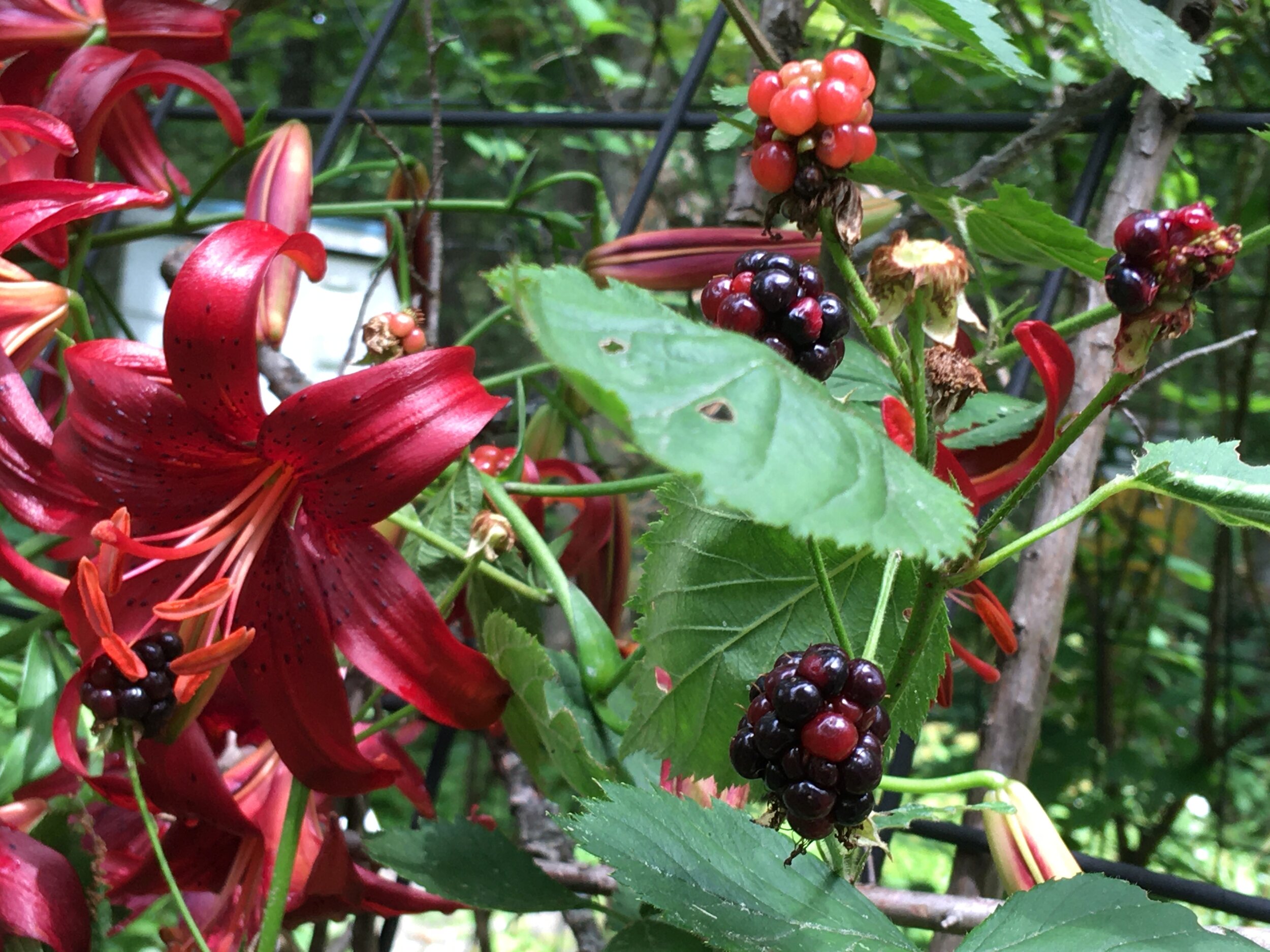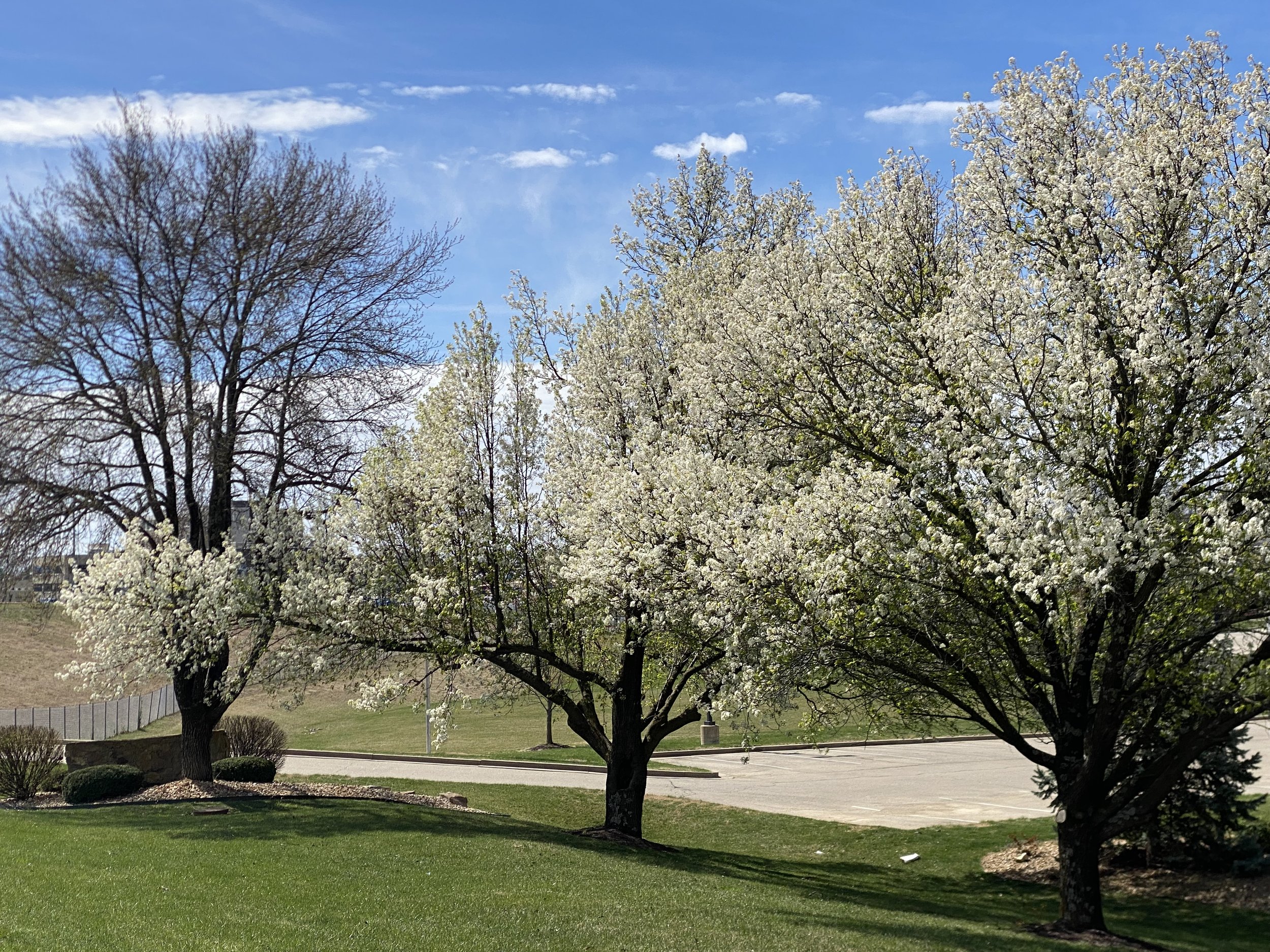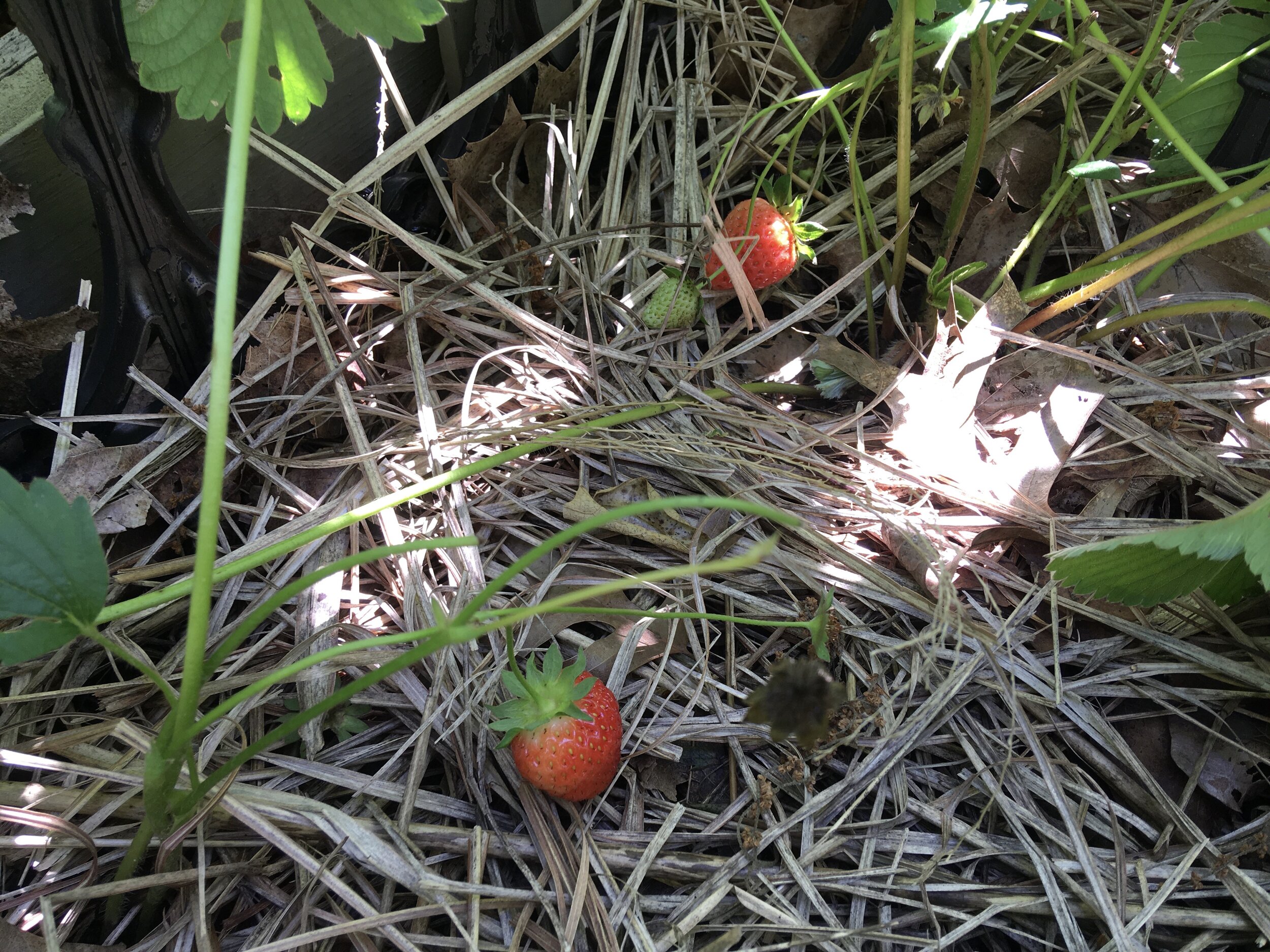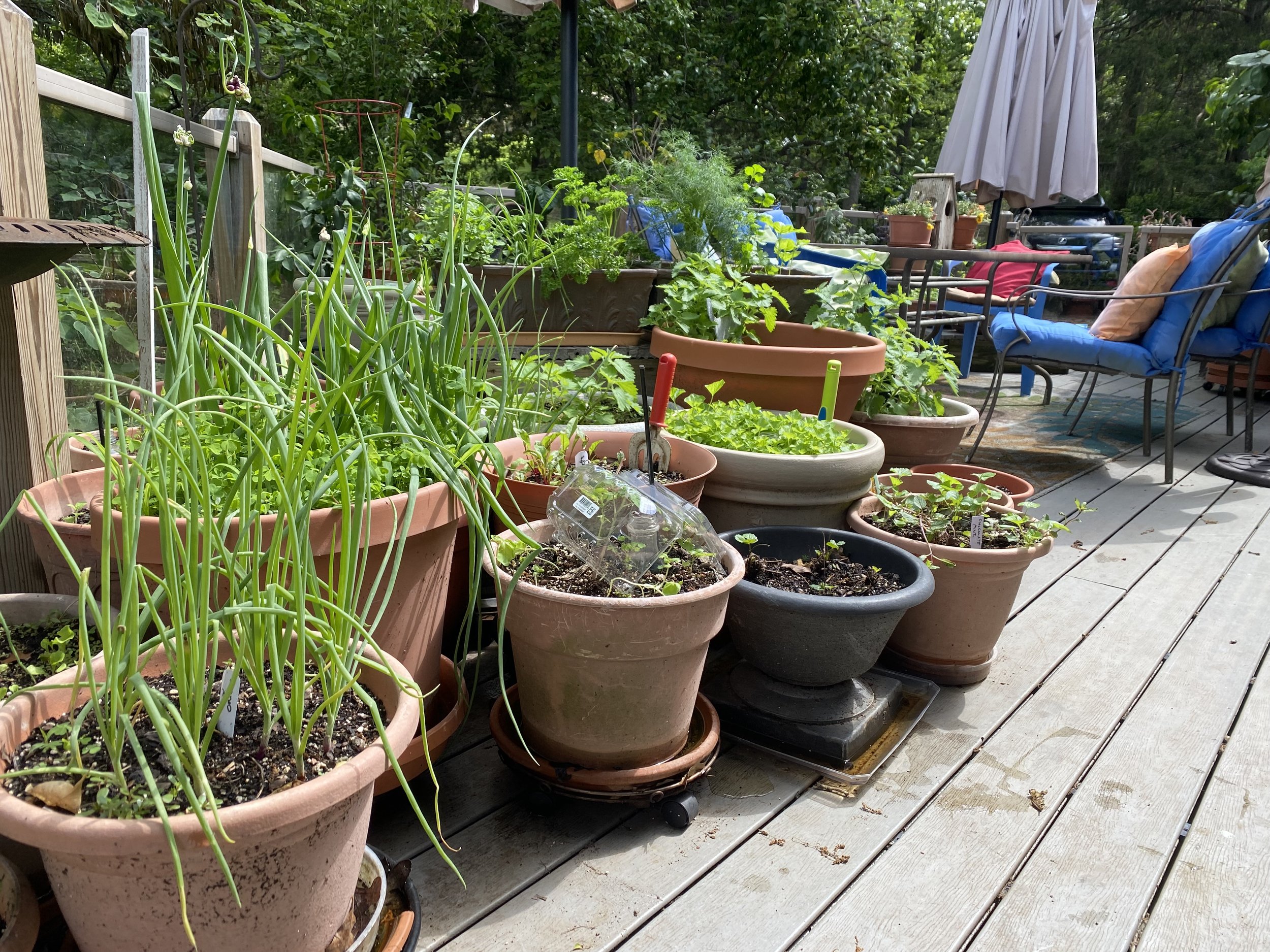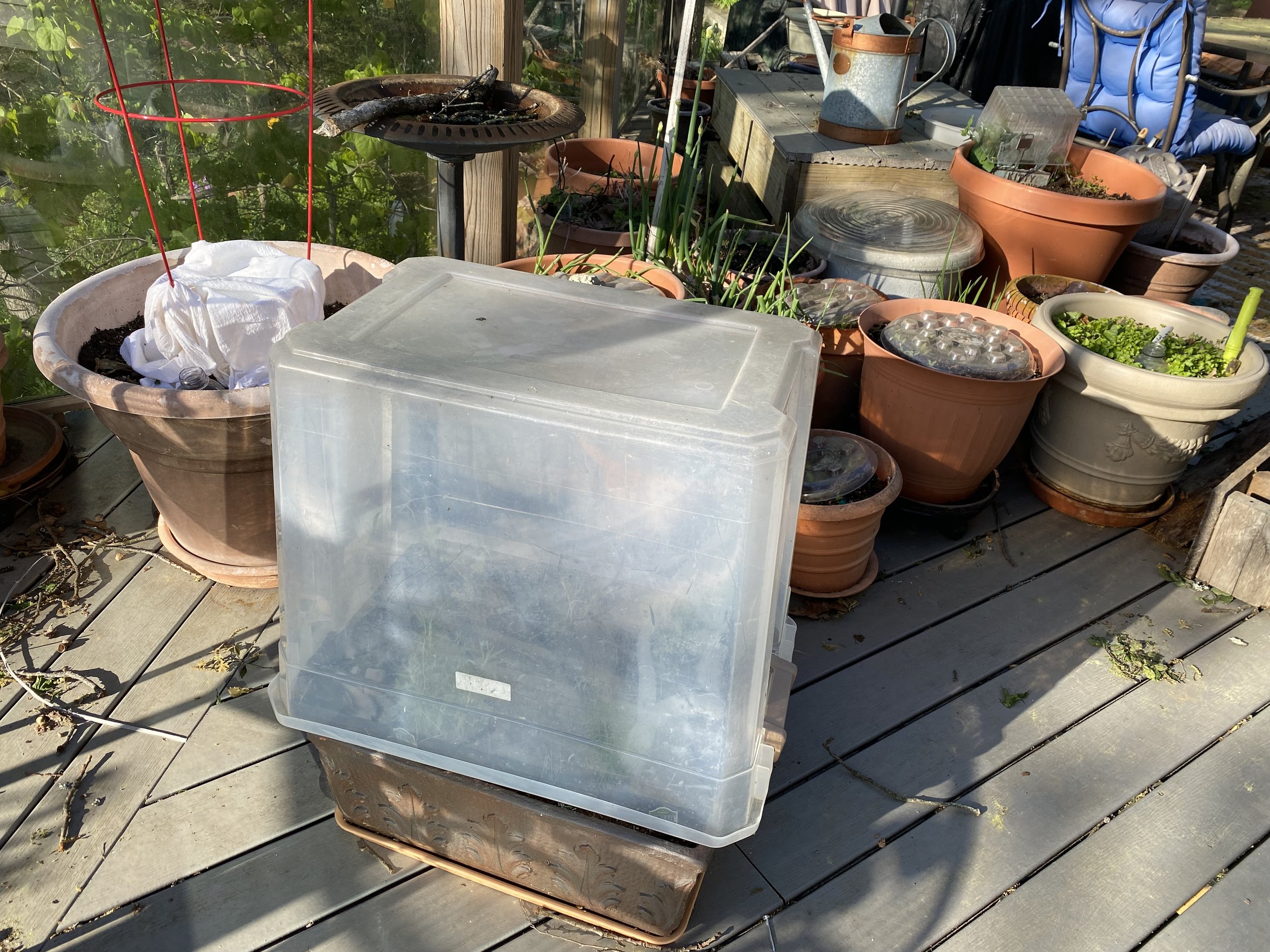July Gardening Chores
/A sure sign of July, Oriental lilies and picking blackberries. (Photo by Charlotte Ekker Wiggins)
July Gardening Chores
Hot heat. Staying cool. Or at least trying. It’s what drives every gardener this month, whether it’s making sure the garden gets an inch of moisture a week or mulch to remain cool. I live in USDA zone 5b so among the other chores for July, besides enjoying picking blackberries:
1. Deadhead flowering plants. Removing spent blooms will help keep plants healthy and may even give you a second and third wave of flowers.
2. Remove weeds/unwanted plants. Unwanted plants take up nutrients, moisture and space away from desired plants. In this context, competition is not a good thing.
3. Know your weeds. If you weren’t sure what it was before, whatever was growing should be showing its true identity by now. Many plants casually labeled weeds are forgotten herbs; others, like goldenrod, are blamed for what a true weed, ragweed does, which is aggravate allergies. And ragweed is a good plant, it only grows in very poor soil and adds nutrients to improve it before it dies off. Did I say know your weeds already??
4. Give your garden one inch of water a week. When you water, use a watering wand or place the hose into the ground, no sprinkling. In hot summer weather, using sprinklers is a waste, the water just evaporates before it even hits the ground.
5. Touch up mulch. Mulch will help keep garden beds cool. Make sure it’s aged mulch. If the mulch is steaming, it’s too young to use on flower beds.
6. Keep your early morning dates with Japanese beetles. Catch them in soap-filled buckets to help reduce the population. Don’t try to catch them later in the day, they will just fly off.
7. No more compost for woody plants, time for them to start hardening off and getting ready for winter.
8. Water trees deeply, especially newly-planted trees and the oldest ones.
9. Rambler roses done blooming? Prune.
10. How are your vines? My blackberries and clematis need a little help so I gauge their possible growth for the rest of this season and add support. Oh, I’m often wrong, the idea is just to give them extra support or it’s a mess trying to untangle them later. I usually wait until next year then and start with fresh growth.
11. I am starting to make new flower beds so I am hauling cardboard boxes home to get a good start. Once I line the beds with cardboard, I add mulch to start making the foundation of the bed. After the next rain, soil will be added, then another layer of mulch.
12. Start thinking about what needs to be done early next spring. I keep a list, check it twice.
13. The nearby composter will also get cleaned out. Not entirely, leave a good bucket-full as compost starter for the next batch.
14. Mowing grass? Don’t bag or rake clippings, they return Nitrogen to the soil.
15. Plant buckwheat in open areas. It’s not only a fast-growing, Nitrogen-introducing cover crop for garden spots, it also gives bees a source of food during August, when little else is in bloom.
16. Keep an eye out for garden visitors such as rabbits and deer. You may not stop them from munching but make sure the plants haven’t been pulled out of the ground to their roots. If so, replant. Squirrels have cleaned out my peach and pear trees so I am planting more trees.
Charlotte

